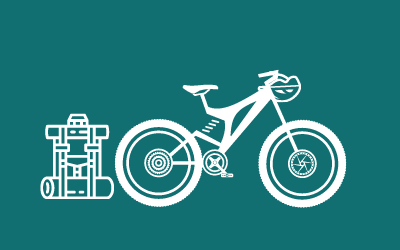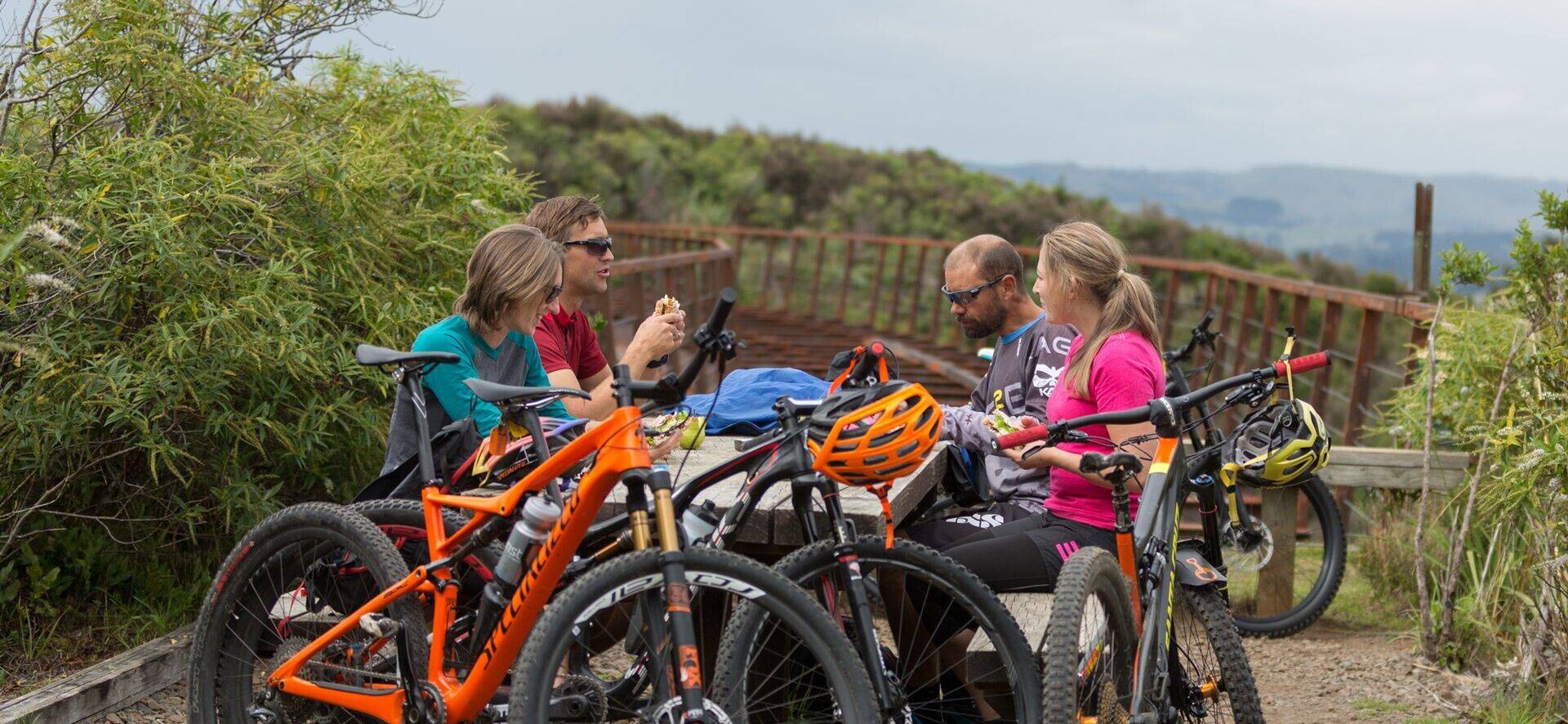Packing for your Adventure
Make your Mountains to Sea - Nga Ara Tuhono experience safe, comfortable and fun by wearing the right clothing and carrying the right gear.

Day Rides
The beauty of a day ride is that you can travel light, but you'll still need to carry all the essentials, some of which can be shared among your group.
- comfortable backpack – note that 30-litre capacity is the largest you’d want to carry. You can also carry gear in a frame bag or seat pack; there are lots of fantastic bike-packing set-ups available.
- food – take more than enough to keep you fuelled up. That cafe or shop you thought would be open might not be.
- water (and water bottle/bladder) – although many rides have water sources where you can top up your bottle, always set off with sufficient supplies and work out where you can get more.
- layered cycling clothes – New Zealand’s changeable conditions call for several layers. We recommend wearing a good thermal top – NZ merino wool is ideal – in between a short-sleeve sports top and an outer layer such as a fleece or shell.
- cycling gloves – highly recommended to keep your hands warm and free of blisters.
- raincoat – if there’s any possibility of cold temperatures or rain, wet-weather gear is essential. In colder seasons, wool socks and warm gloves are also recommended.
- cycle helmets – wearing one is compulsory in New Zealand; they are available from bike hire depots and bike shops.
- sunscreen (and sunglasses) – the New Zealand sun can be harsh, especially in the summer months. If you plan to spend time off the bike, it will pay to pack a sunhat, too. A merino or cotton buff, or bandana, will also help keep the sun off the back of your neck, and keep you warm when its cold.
- first aid kit – a basic first aid kit is recommended for all rides, but especially on remote or more technical rides. Tour operators should provide you or your group with one.
- communication device – although coverage is not always guaranteed, carrying a fully charged cellphone is recommended. For the Mangapurua, Kaiwhakauka, 42 Traverse and Fishers Tracks riders should consider taking a personal locator beacon (PLB) or spot tracker; the Mountain Safety Council website lists places in NZ where you can hire PLBs. Locally, PLBs can be hired from the i-SITE visitor centres in Ohakune, Waiouru, Taumarunui and Whakapapa.
- map – even on the shortest of day rides, a map will help you time your ride and identify points of interest along the way.
- spares & tools – for longer or remote rides, someone in your group should be carrying spare tubes, a pump, lube and any other bike tools (e.g. tyre levers, multi-tool, puncture repair kit as a minimum) as appropriate. Tour operators can advise you and should be able to provide you with basic spares and tools, too.
- torch, headlamp or bike lights (and spare batteries) – should your ride feature any tunnels or be likely to extend beyond daylight hours, be sure to carry a reliable source of light.
- survival kit – for remote rides, consider taking a basic survival kit – this may seem excessive but it could save a life in the event of an emergency. The Mountain Safety Council explains what you need.
Multi Day Rides
For overnight bike-packing adventures, you’ll need to take everything listed for Day Rides plus the gear below, too. You can avoid this by going on a tour or supported trip where your luggage is transferred between overnight stops – a popular and easy way to travel.
Failing that, you’ll have to lug all of this, so weight will become an issue. Ditch the non-essentials such as the 500-page novel and consider other ways to lighten your load such as sharing certain equipment amongst your group. Some keen folk have even been known to snap their toothbrushes in half!
Here’s a list of items commonly taken on bikepacking trips. For more tips, see the Mountain Safety Council’s Backcountry Mountain Biking guide (detailed in our Riding Safely section) and bikepacking.com.
- tent or bivvy bag – if you’re not staying under a proper roof, then you’re a true bike-packer! You, will however, need a quality lightweight tent or bivvy bag to cope with the New Zealand weather conditions (and sandflies).
- sleeping bag & sleeping mat – essential for a good night’s sleep!
- food – you will need a lot more food. Dehydrated meals are a great weight and space-saver, and some now even taste good!
- clothing – spare socks, more merino underlayers (including long johns for cool conditions), a fleece jacket and a woolly hat/thin balaclava.
- toiletries – travel-sized toiletries and a pack towel come into their own here. Don’t forget toilet paper (in a waterproof bag).
- spares & tools – chain tool, spoke tool, bungy cords, mini-tool with pliers. Don’t forget duct tape and cable ties; it’s amazing what you can fix with them.
- cooking equipment – cooker, pot(s), plate/bowl, cup, cutlery and penknife.
- front & rear lights – essential for those dark, early starts, and when you’ve been delayed and have to cycle beyond dusk to reach your destination.
- compass/GPS (and batteries) – if you’re heading off the grid, these navigational aids should help you get back on it.
- chamois cream (e.g. Sweet Cheeks Butt Butter) – will help prevent and sooth the almost inevitable chafing, blisters and sores.
- dry bags or plastic bags – bikepacking bags and backpacks aren’t generally waterproof; kit that needs to stay dry should be put in a dry bag or plastic bag.
- spare tyre – for irreparable blow-outs.
- bike lock – better safe than sorry.
- earplugs – small, light and impervious to hut snorers.
Optional extras include:
- cycle computer
- jandals/flip-flops/hut shoes
- puffer jacket
- water filter/purification tablets
- battery bank for charging mobile phone
- sarong – has many different uses
- sleeping bag liner
- bar ends & aero bars – for comfort and to give your hands a rest
How to Pack
Packing for an overnight trip is an art in itself. Check out this video from New Zealand’s Mountain Safety Council to help get you started.






